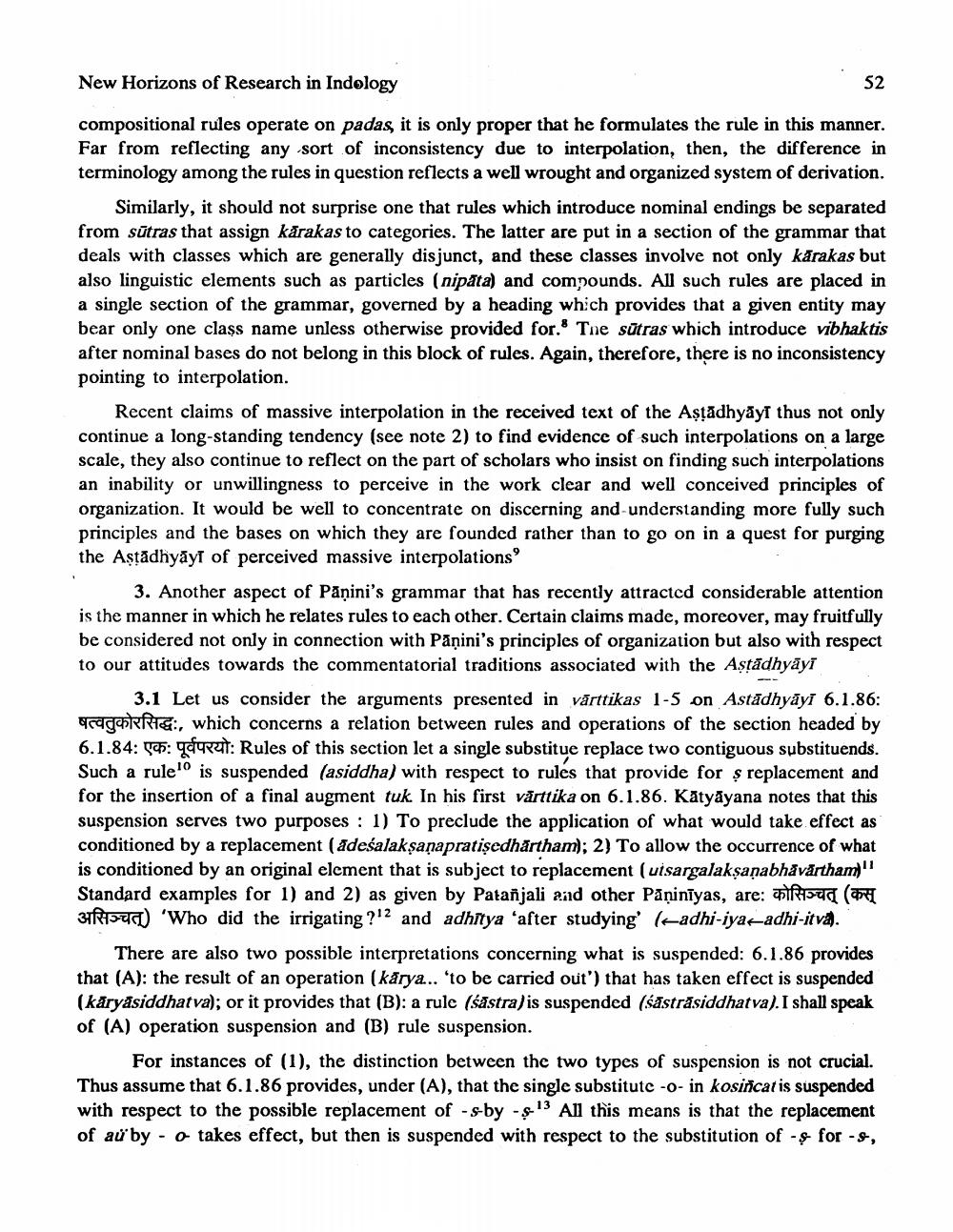________________
New Horizons of Research in Indology
52
compositional rules operate on padas, it is only proper that he formulates the rule in this manner. Far from reflecting any sort of inconsistency due to interpolation, then, the difference in terminology among the rules in question reflects a well wrought and organized system of derivation.
Similarly, it should not surprise one that rules which introduce nominal endings be separated from sūtras that assign kärakas to categories. The latter are put in a section of the grammar that deals with classes which are generally disjunct, and these classes involve not only karakas but also linguistic elements such as particles (nipata) and compounds. All such rules are placed in a single section of the grammar, governed by a heading which provides that a given entity may bear only one claşs name unless otherwise provided for. The sūtras which introduce vibhaktis after nominal bases do not belong in this block of rules. Again, therefore, there is no inconsistency pointing to interpolation.
Recent claims of massive interpolation in the received text of the Aşgadhyāys thus not only continue a long-standing tendency (see note 2) to find evidence of such interpolations on a large scale, they also continue to reflect on the part of scholars who insist on finding such interpolations an inability or unwillingness to perceive in the work clear and well conceived principles of organization. It would be well to concentrate on discerning and understanding more fully such principles and the bases on which they are founded rather than to go on in a quest for purging the Aştādhyāyt of perceived massive interpolations
3. Another aspect of Pāņini's grammar that has recently attracted considerable attention is the manner in which he relates rules to each other. Certain claims made, moreover, may fruitfully be considered not only in connection with Pāṇini's principles of organization but also with respect to our attitudes towards the commentatorial traditions associated with the Astādhyāyi
3.1 Let us consider the arguments presented in vārttikas 1-5 on Astādhyāyi 6.1.86: tagarria:, which concerns a relation between rules and operations of the section headed by 6.1.84: 90: uput: Rules of this section let a single substitue replace two contiguous substituends. Such a rule' is suspended (asiddha) with respect to rules that provide for ș replacement and for the insertion of a final augment tuk. In his first vårttika on 6.1.86. Katyāyana notes that this suspension serves two purposes : 1) To preclude the application of what would take effect as conditioned by a replacement (adeśalakşaņapratişedhartham); 2) To allow the occurrence of what is conditioned by an original element that is subject to replacement (uisargalaksanabhåvartham)" Standard examples for 1) and 2) as given by Patanjali and other Pāņinīyas, are: Real ( 3146) 'Who did the irrigating?!and adhitya ‘after studying' (adhi-iya-adhi-itva).
There are also two possible interpretations concerning what is suspended: 6.1.86 provides that (A): the result of an operation (karya... 'to be carried out') that has taken effect is suspended (käryasiddhatva); or it provides that (B): a rule (sastra) is suspended (sastrăsiddhatva). I shall speak of (A) operation suspension and (B) rule suspension.
For instances of (1), the distinction between the two types of suspension is not crucial. Thus assume that 6.1.86 provides, under (A), that the single substitute -o- in kosincat is suspended with respect to the possible replacement of -s-by - 13 All this means is that the replacement of au by- o takes effect, but then is suspended with respect to the substitution of - & for-S,




